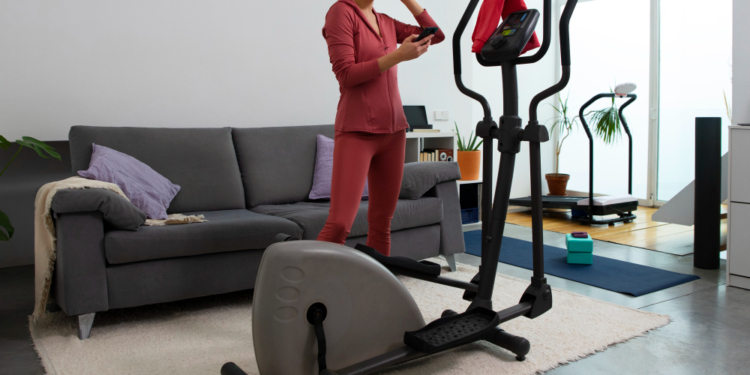Embarking on a fitness journey often involves subscribing to the closest gym, yet extracting the true value can be elusive. Many individuals grapple with waning motivation, making excuses or postponing their gym sessions even with an annual membership.
A savvy alternative is to create a gym haven within your own home. This presents numerous health and lifestyle perks and ensures that you won’t find reasons to dodge your workout. Establishing a home gym empowers you to sustain physical training, embrace routines, lead a healthier lifestyle, manage your time effectively, and perform exercises with absolute comfort and freedom, shielded from judgmental eyes.
Let’s delve into the process of building your personalized home gym with these five tips:
1. Decide The Location Of Your Home Gym
Choosing the Right Space for Your Fitness Oasis
Begin by determining the ideal location for your home gym. Before delving into articles or researching bodybuilding programs, assess the available space in your home. Decide where to recreate your gym, be it a garage, basement, spare room, or a designated space adjacent to your living area. Relocate existing items in the chosen space to facilitate planning and equipment selection. To ensure safety, measure workout equipment and design a floor plan to accommodate all machines. Consider the impact of the location on your workout experience, and if you prefer fresh air, opt for an open-air home gym.
2. Set Your Budget
Strategizing Your Gym Essentials without Breaking the Bank
When it comes to equipment, stick to the basics. Before embarking on your shopping spree, establish a budget and stick to it. List the essentials for your workout routine, and don’t be afraid to explore secondhand options. Online platforms often offer preloved equipment at reasonable prices. This saves money and ensures you invest wisely in items essential for your fitness journey.
3. Invest In Quality Gym Equipment
Prioritize Longevity and Performance
Don’t shy away from allocating funds for high-quality equipment. Prioritize durability over cheap alternatives that may require frequent replacements, ultimately costing more. Research reputable fitness equipment brands read reviews, and leverage resources to find reasonably priced options. If the price difference is negligible, consider opting for newer or advanced models to enhance your workout experience and capitalize on the long-term health and fitness benefits.
4. Consider Installing Rubber Mats
Protecting Your Flooring and Enhancing Comfort
Protect your flooring, especially when lifting heavy weights, by installing rubber mats in your gym space. Heavy equipment and dumbbells can cause damage regardless of your original flooring materials. Rubber mats safeguard your flooring and reduce noise generated by equipment impact. Moreover, these mats enhance comfort during floor exercises. With many options available, you can find suitable rubber mats within your budget preferences.
5. Be Creative And Resourceful
DIY Gym Construction and Personalization
Engage in a creative process when adding equipment to your home gym. Explore alternative, budget-friendly gym equipment if luxurious machines are beyond your means. Consider selling your existing gym equipment to finance new additions. Infuse creativity and resourcefulness into designing and decorating your gym space, creating an environment that fuels motivation. Remember, the atmosphere and ambience significantly contribute to sustaining your fitness drive.
Conclusion
Creating your home gym is a rewarding journey that combines convenience, budgeting, quality, comfort, and creativity. These tips can build a personalized fitness haven that encourages regular workouts and a healthier lifestyle.
FAQs About Building a Home Gym
Q1: How much space do I need for a home gym?
Consider the available space in your home, whether it’s a spare room, garage, or corner beside your living room. Measure the area to plan your gym layout effectively.
Q2: Can I build a home gym on a tight budget?
Absolutely! Stick to the basics, set a budget, explore secondhand options, and consider selling old equipment to fund new additions.
Q3: Are advanced gym equipment models worth the investment?
If the price difference is reasonable, investing in newer or advanced models can enhance your workout, providing long-term benefits.
Q4: How do rubber mats benefit a home gym?
Rubber mats protect flooring from heavy weights, reduce noise, and add comfort during floor exercises, creating a safer and more enjoyable workout space.
Q5: How can I personalize my home gym on a budget?
Get creative and resourceful! Explore alternative equipment options, consider DIY projects, and focus on designing a motivating atmosphere without breaking the bank.


Discussion about this post